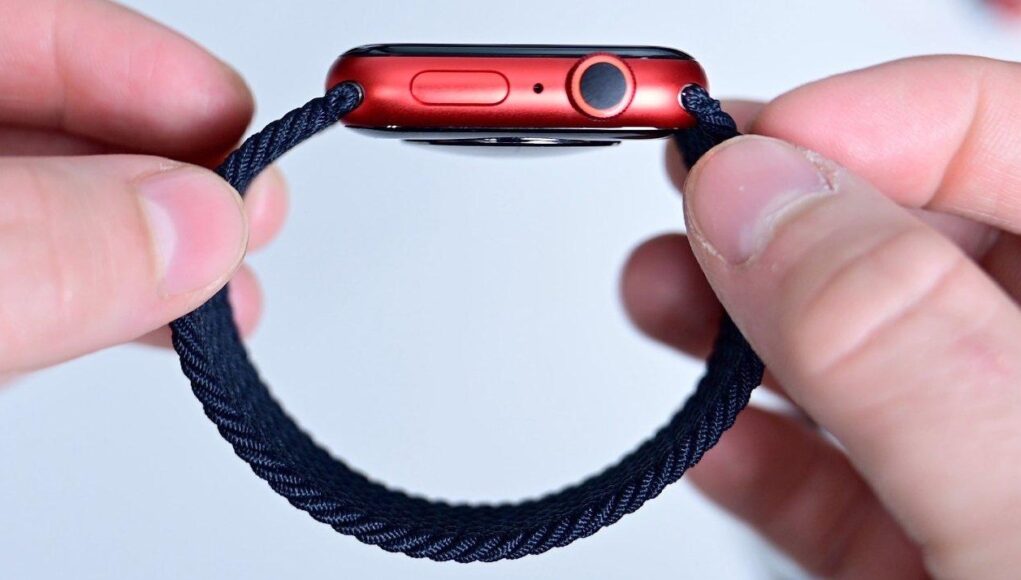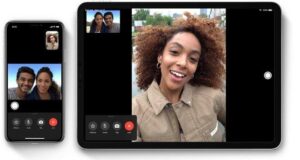Apple has been researching ways to have an Apple Watch band automatically track the wearer’s hydration, with all the health monitoring benefits that would bring.
Apple supplier Rockley Photonics recently announced a non-invasive glucose monitoring system that so looked like it was meant for Apple Watch, that the demo units use Apple wrist bands. Practically missed in that announcement, though, was that Rockley’s system is intended to monitor much more, including hydration.
Now Apple has separately been granted a patent concerning precisely that. A patent for a hydration sensor in Apple Watch, even granted, does not mean there will ever be a product.
However, as the newly-revealed “Hydration measurement with a watch” research says, hydration is a key health indicator. It’s one that from a single type of sensor is able to contribute a great deal of information.
“A user’s hydration level has significant impacts on the health of a user,” says the patent. “Dehydration can impair performance and is associated with several deleterious health consequences, including heat strokes. Overdrinking can result in hyponatremia, fatigue, confusion, coma, and even death.”
Currently there are many apps for iPhone and Apple Watch which are designed to remind users to drink often, and not too much. As for actual measuring, though, the patent says that typical techniques are “generally invasive, expensive, or unreliable.”
“For example, some hydration tracking techniques involve testing fluid samples, such as urine or blood, from the user,” it continues. “Some techniques require analyte sensors to chemically react with sample fluids.”
“Many of these sensors are disposable and limited to a single use,” says Apple. “Yet other techniques involve tracking the intake of fluids, expulsion of fluids (e.g., sweat, urine, etc.), and weight changes across a period of time.”
Apple’s patent is even a little dismissive of what it describes as these “cumbersome and unreliable” techniques. The patent’s inventor, Alexander W. Williams, also points out that the lack of reliability is specifically because of “the variety of measurements that must be manually taken.”
His proposal is that Apple Watch instead perform regular, periodic measurements to calculate a user’s hydration, and do so using a Watch band.
“A watch [band] can be positioned to receive and measure one or more electrical properties of perspiration produced by the user wearing the watch,” says the patent. “The measurements can be used to provide useful feedback and health tracking information to a user, thereby allowing the user to better manage hydration and overall health.”
Apple’s idea is to include electrodes for measuring the electrical properties of the perspiration.” Those properties “can represent a concentration of electrolytes in the perspiration, which in turn represents a hydration level of the user.”
Since this measurement is performed on perspiration, it is non-invasive and can be done repeatedly, accurately, automatically, and with minimal user intervention.” Then the measurements can be tracked over time, “thereby allowing the user to better manage hydration and overall health.”
This patent has been recently revealed as it was just granted — but a version was originally filed in March 2018. So while there’s no guarantee the feature will come in, for instance, the Apple Watch Series 7, the company has been pursuing the idea for several years.
AppleInsider has affiliate partnerships and may earn commission on products purchased through affiliate links. These partnerships do not influence our editorial content.
A new “Impact Accelerator” program from Apple will see the company provide training 15 environmental businesses, all minority-owned, with the aim of helping communities affected by climate change.
Apple Pay officially landed in Qatar on Tuesday with financial network integration from Qatar National Bank, delivering the payments service to a third country in the Middle East and North Africa (MENA) region.
Apple Pay dominated the mobile wallet space for debit transactions in 2020, a year of significant sector growth thanks to dramatic changes catalyzed by the COVID-19 pandemic.
Klipsch refreshed its T5 II True Wireless earphones to include active noise cancellation, bringing it into the same market as Apple’s AirPods Pro. Here’s where the newcomer stands against Apple’s personal audio offering.
Apple may have market dominance with its AirPods Pro, but neither AirPods Pro nor the new Beats Studio Buds can match the luxurious build quality of Master & Dynamic’s new MW08 Sport true wireless earbuds.
With the launch of the Beats Studio Buds, Apple now has a total of four wireless earbuds it sells to consumers. Here’s how the newcomers face against AirPods, AirPods Pro, and Beats Powerbeats Pro.
Sony launched the WF-1000XM4 wireless earbuds in June, its noise-cancelling rival to the Apple AirPods Pro. Here’s how Sony’s latest stacks up against Apple’s heavy hitter.
In April, Amazon upgraded its Echo Buds to make it a better value-oriented rival to Apple’s AirPods. Here’s how Amazon’s offerings stack up to Apple’s AirPods and AirPods Pro.










